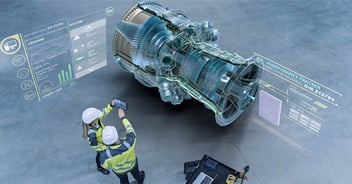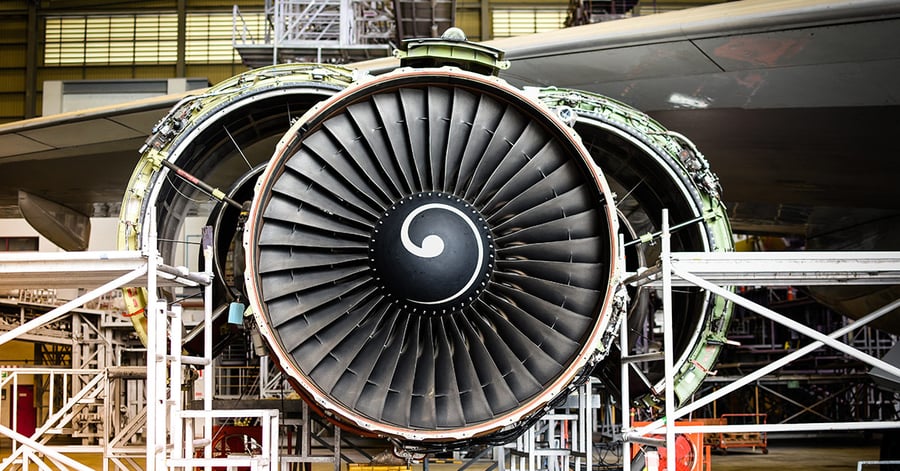
MRO Americas 2022: Key takeaways & Industry expectations
Published :

Recently concluded MRO Americas 2022, hosted in Dallas, Texas from April 26-28, 2022, is considered the premier show for the aviation maintenance, repair and overhaul aftermarket, that aims to ensure aircraft remain ready to fly at all time. It was well attended by all stakeholders of MRO industry and saw the attendance close to pre-pandemic levels. We at Ramco being regular attendees to this conference every year, had some great conversations this year and clearly saw difference in the way conversations went as compared to previous conferences. This blog aims at some of the key points of discussions/observations at the show.
Unlike in the past, where bringing digital technologies within MROs used to be a specific use case within a specific department, now there seems to be a consensus among majority organizations to look at digital strategy company wide rather than in siloes. MROs have also come to an understanding that they cannot really reap their digital goals with siloed IT infrastructure. Enthusiastically, a push at C-level is visible on the ground where patronage is given by leadership teams headed by Chief Digital officer (CDO)/ Chief Technology officer (CTO) to drive these initiatives along with business teams.
We have seen the news during early pandemic days how belly cargo used for freight transportation and now with passenger growth is coming back to normal, that space is taken back by passenger cargo. The P2F market is witnessing an important trend as e-commerce grows and a new generation of passenger aircraft is seeing a second life as cargo carriers, as an older, less fuel- and operationally efficient fleet is phased out. This is driving interest from MROs perspective to build or scale capacities to support conversions as this will bring new revenue channel.
The MRO industry is still heavily dependent on human labor and lags behind other industries like manufacturing, retail, and pharma in terms of technology adoption. And this status quo is bound to get disrupted with new technologies and one such change is driven by automation by robotics and by MRO systems.
There is a perception that Robotics will make human jobs irrelevant. At the moment, this is far from truth. In fact, it aids humans to perform their jobs better by assisting with routine, repetitive and labor-intensive tasks. The use cases for using robotics in MRO environment are many. These could range from single parts repairs and carbon fiber machining to intricate inspection tasks through miniaturization, swamp of drones inspecting engines, capturing images, and sending them back to mechanics for inspection.
MROs irrespective of nature of services or geography are under constant pressure from its customers to deliver services with faster TAT with lesser cost. This is driving MROs to think of innovative ways to bring efficiencies in their operations by making the process faster and returning the aircraft to active service in the air as soon as possible. In line with this, the new addition to Maintenance arsenal is Drones. Drones are becoming a mainstream in the aircraft inspection for visual assessment owing to its small size and ability to be remotely managed. The human inspection and machine inspection needs to coexist!
Aircraft technicians doing maintenance work using mobile devices still in vogue. There is no doubt that Mobile devices help in maximizing efficiencies and time savings in MRO and broader support processes by giving the technician the ability to approve a work order, view the schedule, access the task card, view stock availability, raise discrepancy, access technical drawings or check repair history at the touch of a screen. In the overall digitalization goals, maintenance execution using mobile devices are low hanging fruits and there was a great interest from the industry to learn about these technologies.
Enterprise asset management (EAM) involves the management of mission critical assets of an organization throughout each asset's lifecycle. EAM is used to plan, optimize, execute, and track the needed maintenance activities with the associated priorities, skills, materials, tools, and information. The aim is to optimize the quality and utilization of assets throughout their lifecycle, increase productive uptime and reduce operational costs.
Enterprise asset management (EAM) involves the management of the maintenance of physical assets of an organization throughout each asset's lifecycle. EAM is used to plan, optimize, execute, and track the needed maintenance activities with the associated priorities, skills, materials, tools, and information.
The software helps in effective maintenance of assets through preventive, predictive, shutdown and breakdown maintenance strategies. The system also helps enterprises mitigate equipment risks by enhanced safety standards. The streamlined operations and improved asset performance helps organizations increase their investment effectiveness.
EAM is important because it helps organizations track, assess, manage and optimize asset quality and reliability. Asset intensive Organizations have hundreds, thousands, even millions of assets which needs to be maintained to maximize / optimize life of these assets to increase the return on investment.
The key features of effective EAM are:
Asset Intensive companies under the following Industries :
Contact us for a meeting and schedule a demo
This differs on case to case basis, based on the type of installation and unique industry specific requirements. Contact us for a meeting and schedule a demo.
This differs on case to case basis, based on the type of installation and unique industry specific requirements. Contact us for a meeting and schedule a demo.
Stay Connected, follow us on LinkedIn / Twitter to know more about EAM Software latest trends.

Prakash Babu Devara is Head of Aviation Marketing at Ramco Systems, bringing over 15 years of experience in marketing and branding. With a passion for aviation and technology, he is dedicated to bringing the best of both worlds together to drive value proliferation. Prakash has a proven track record in developing and implementing effective marketing strategies, building strong brands, and driving business growth. In addition to his role at Ramco, he is an aviation blogger and a seasoned public speaker known for communicating complex ideas clearly and engagingly.

All Rights Reserved. © Copyright 2024. Ramco Systems.